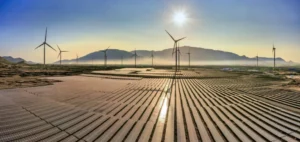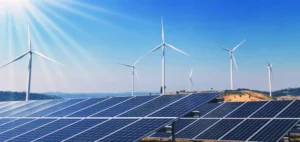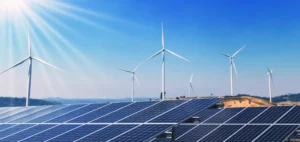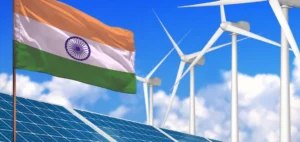Italy has reached a historic milestone in its energy transition.
For the first time, electricity generation from renewable sources has surpassed that from fossil fuels, according to Italian power grid operator Terna.
This achievement highlights the country’s growing efforts to reduce its dependence on fossil fuels and increase the use of green energies.
Indeed, on June 22, hourly electricity production from renewable sources reached an all-time high of 33.2 gigawatts (GW).
This record figure reflects not only the increase in installed renewable energy capacity, but also a favorable economic climate, with abundant rainfall in northern Italy conducive to hydroelectric generation.
Increased hydroelectric production
Hydroelectric production rose by a spectacular 65% in the first six months of the year, reaching almost 26 terawatt-hours (TWh).
This increase was particularly marked in the north of the country, where rainfall levels were exceptionally high, contrasting with the drought in the south.
This phenomenon was a major factor in setting new records for renewable energy production.
According to financial analysts, this trend should boost the earnings of the country’s leading utilities, such as Enel and A2A, in the second half of the year.
These companies benefit directly from the increase in electricity production and demand.
Growth in installed capacity
In its report, Terna also noted a growth of 3.7 GW in the operational capacity of renewable energies in the first half of the year, compared with an increase of just 1.1 GW over the same period in 2023.
This growth is the result of new photovoltaic and wind power installations, supported by incentive policies and massive investment in the sector.
Electricity demand in Italy also rose by 1.1% year-on-year, reaching a 1.5% increase in June.
This increase in demand underlines the importance of continuing to invest in energy infrastructure to meet growing needs while respecting sustainability objectives.
Italy has set itself the target of increasing the share of renewable energies to 63% of its total electricity production by the end of the decade, as part of its National Integrated Energy and Climate Plan (PNIEC).
Current results show that the country is well on the way to achieving this ambitious goal.
The transition to renewable energies is essential for Italy to reduce its greenhouse gas emissions and combat climate change.
The recent success in overtaking fossil fuel production is a positive signal for the country’s energy future.
This breakthrough in renewable energy production in Italy is not only an environmental victory, but also an economic opportunity.
By continuing along this path, Italy could not only reduce its dependence on imported fossil fuels, but also boost job creation in the renewable energy sector and strengthen its position as a leader in Europe’s energy transition.





















